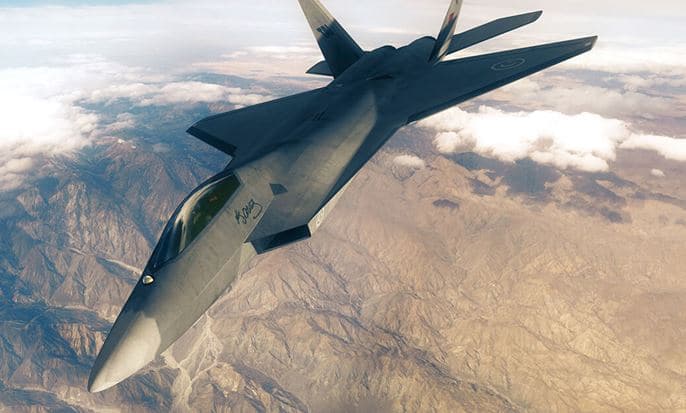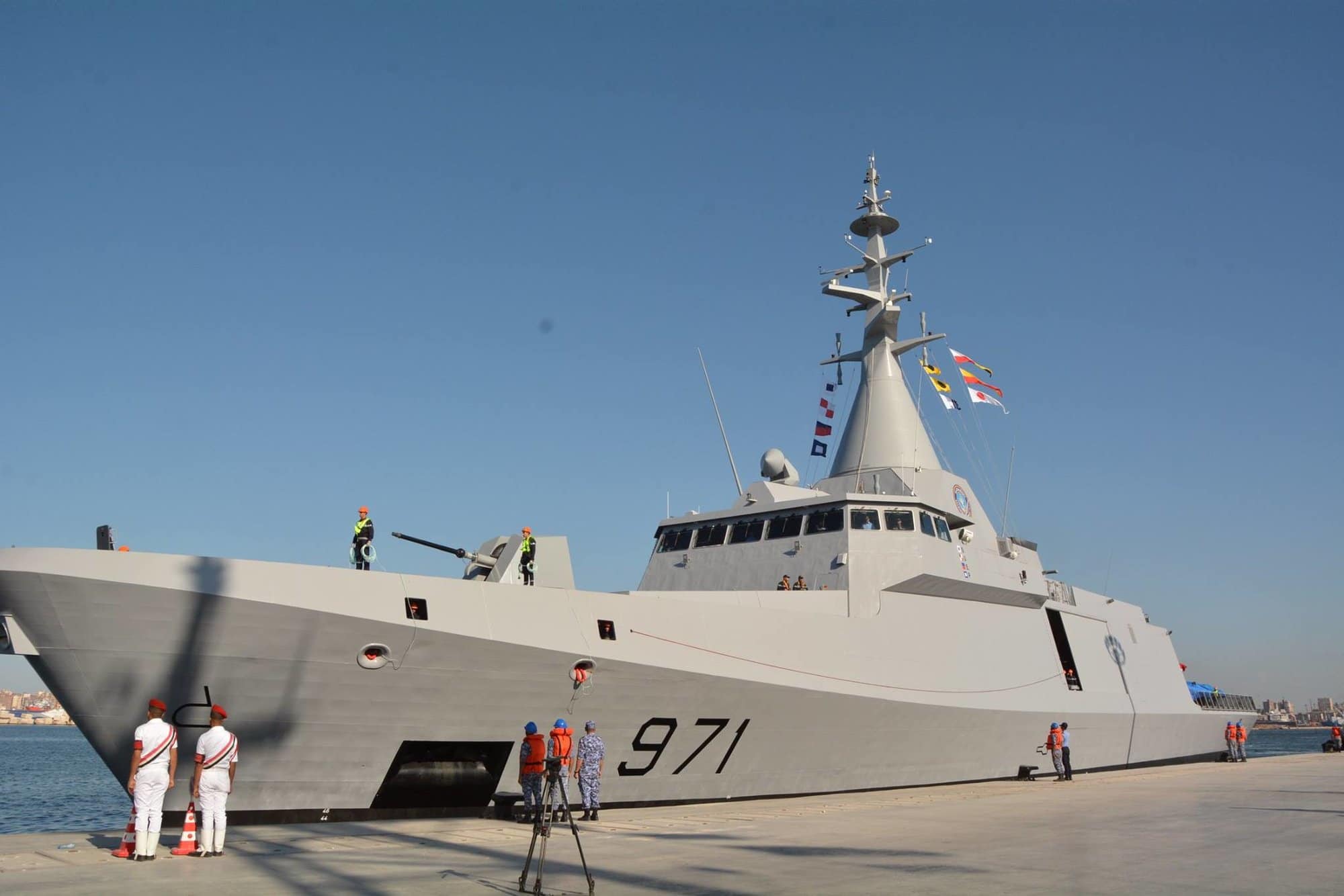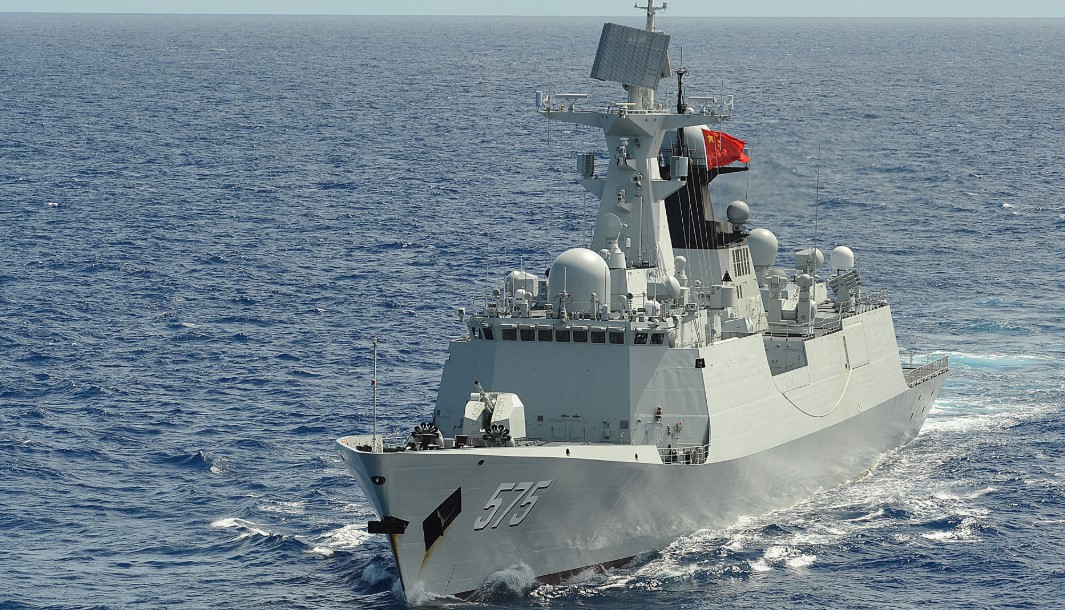2666Views 16Comments

TAI lists official specifications of next-gen fighter TFX
Turkish Aerospace Industries (TAI) has released the official specifications of the TFX, officially known as the Milli Muharebe Uçağı (National Combat Aircraft).
As listed on the TAI website, the TFX will have a maximum take-off weight (MTOW) of 27,215 kg, length of 19 m and wingspan of 12 m. It will use two turbofan engines, each with 9072 kgf in thrust output.
In terms of performance, the TFX is to have an operational radius of over 1,111 km and a flight ceiling of over 16,764 m (i.e. 55,000 ft). It will have a maximum speed of Mach 2. TAI did not release the maximum payload or empty take-off weight of the TFX.
In its statement for the TFX’s profile, TAI stated that the TFX “is envisaged … [to] work with F-35A planes planned to enter the inventory of the Turkish Air Force,” adding that TFX production will run until 2070.
Under Ankara’s policy of domestically sourcing defence equipment, TAI and its Turkish industry partners aim to manufacture the TFX’s low radar cross-section airframe, engine, munitions, situational awareness elements and it sensor fusion inputs indigenously in Turkey.
On November 28, Turkey’s Minister of Defence (MoD) Nurettin Canikli said that TAI, the MoD and Turkey’s Undersecretariat of Defence Industries (SSM) remained committed to achieving a maiden test flight for the TFX in 2023, stating it was the “primary goal” of the Turkish government.
In January, the TAI and the SSM awarded BAE Systems a contract worth over £100 million to help design the TFX. Under the four-year contract, BAE is to provide “400 man/years” of engineering consulting and technical support work to TAI. Upon its completion, BAE is expected to receive another contract to support the development of the TFX in Turkey.
In regards to the TFX turbofan engine program, the Turkish MoD emphasized that it was still looking at its options. Although the UK government has provided an ‘Open General Export License’ to Turkey, enabling Rolls-Royce to partner with the private Turkish company Kale Group to form TAEC Uçak Motor Sanayi AS.
Co-owned by Kale Group (51%) and Rolls-Royce (49%), TAEC was formed in May to develop and produce a turbofan engine in Turkey for the TFX. MSI Turkish Defence Review reported that Rolls-Royce will also train 350 Turkish engineers and utilize Turkish technical capacities as part of the development process.
However, the Turkish MoD told journalists that Turkey is not looking to depend on one country on the TFX program, stating, “When you work with a single company, or when you depend on a single country, you could face different problems in certain stages of the project.”
The Turkish defence publication C4Defence reported on December 15 that TUSAŞ Engine A.Ş. (TEI) – which is co-owned by TAI (50.5%), General Electric (46.2%) and the Turkish Armed Forces Foundation and Turkish Aeronautical Association (3.3%) – has also submitted its own engine proposal to the SSM.
Although it is not known how the TEI turbofan program is slated to manifest, it should be noted that TEI is undertaking its own design and development work as well as licensed manufacturing. For example, for the Turkish T-70 Black Hawk helicopter program, TEI will manufacture the General Electric (GE) T700-GE-701D turboshaft engine under license. However, TEI is also spearheading the development of a 1,400 shp turboshaft engine for the TAI T-625 utility helicopter and TAI ATAK-2 attack helicopter.



16 Comments
by Joseph
It looks like TFX is the largest among TFX (Length: 19 m, Wingspan: 12 m), FC-31 (Length: 17.3 m, Wingspan: 11.5 m) and KFX (Length: 15.6 m, Wingspan: 10.7 m), and KFX is the smallest, according to information available on wikipedia.
It’s combat radius (1111km) seems slightly smaller than FC-31 (1250km). KFX’s combat radius is currently unknown, it’s maximum range is supposed to be 2,052 nautical miles (2,361 miles; 3,800 km) according to:https://www.militaryfactory.com/aircraft/detail.asp?aircraft_id=1035 but external fuel tanks are most likely used to achieve such range.
It seems the engines (9072 kgf = 88.9 kN) TFX is planning on using are likely less powerful than F414 (97.9 kN), which KFX is going to use, but similar to WS-13E (90 kN) FC-31 currently using (information is from wikipedia).
FC-31 could be using WS-19 eventually, recently there are rumours that WS-19’s first prototype is undergoing final assembly, so it could be 5 ~ 8 years before it is ready. WS-19 is likely to have similar thrust compare to F414, but still very little confirmed information is known yet.
Maybe in few years when more information is available Bilal can do a comparison of these 3 aircraft base on published specifications.
by Steve
Looks like a good fleshing out of details. We need to decide if we are going to join this project or go for FC-31. These things take time and a decision in the next 1-2 years is what we are looking at. Looks like we have to talk to British as well. We should not expect Turks to do all the talking on our behalf.
by MOHAMMAD HARIS FAHIM
One thing that depressed me is the fact that despite sky high claims, we still lack the basic infrastructure for RnD although it is not to be blamed on arm forces since it’s the corrupt politicians with their hudaibiyas and Surrey mahals which has caused this. I won’t wash dirty laundry here coz enemies also read this but I would like to ask why don’t we create an indigenous program for wonder weapons like 5 gen jets, radars, ramjet, scramjet and SAMs just like nuclear program.
by Brohisbullettimeex
As previously it has been cleared that its Western avionics tech might get a no go from American diplomats or lobbied by Indian diplomats . … If in case we may attach ourselves but the rising costs per unit and development costs might restrict pak to have a look at other options…. As in previous govt j10 was considered for purchase after its technical data , aerodynamics ,costs, per unit spending and its maintenance were studied deeply but suddenly PAF left it .
by sam
bro it is too expensive and almost impossible for pakistan to go for all in once,
pakistan defence budget is too small to fund many projects in the same time, while in fact it use very huge amount on missile and nuclear program.
for example a 5th generation fighter cost billion of dollar maybe tens of billions.
so if pakistan fund it, there will be left nothing for missile and nuclear deterrence
best for pakistan is to produce jf17 block III, and buy small amount of advanced air machines either from China or in the future from Turkey, and navy vessels enough to safeguard her seas but invest heavily in missile defence and more advanced missile programs with MIRV capabilities.
so the enemy think twice before do any misadventure.
by sami shahid
Turkey is going fine. Flight test in 2023 is reasonable as it is buying F-35 as well. Anyway, Pakistan should concentrate on developing its own stealth fighter as we cannot wait till 2025. I’m sure we can easily develop a good stealth air craft with the help of Chinese companies. Let it be single engine as F-35 is also a single engine stealth fighter.
by TZK
FC-31 is twin engine plane that is available now. Pak was lacking a capable twin engine plane to supplement the single engine F-16 and the JF-17. As they say acquiring the FC-31 is a ‘no brainer’.
by Steve
I agree the case for an indigenous fighter is there but realistically we can’t build it without extensive help, and who knows the timescale involved. F-35’s single F135 engine is extremely powerful at 190kN and not many engines match it. Realistically we are probably stuck with 2 engines which is not necessarily a bad thing. Pakistan is lucky in that we are probably one of the few countries with a choice of two 5th gen fighters. Needs careful realistic un-emotional consideration. If we get FC-31 we will almost certainly be the first to introduce 5th gen in the subcontinent, and may enjoy a period of strategic advantage, with a possibility of more active pursuit of strategic goals.
by Ahmed Shahab
Whats interesting to note is that:
TFX targeted deadline is 2023
ACM also siad AZM target deadline is also 2023.
by Violet
Well said bro. Your comment is more practical and reality based rather than an emotional outburst emanating from years and years of inferiority complex living in the shadows of a superior neighbor.
The only reason why India probably has still not directly interfered in Turkey (by diplomatic power play, or offering bigger carrots/big ticket projects) nor has pressed some third party (like US or UK) in asking Turkey to not share defense tech with one particular south Asian country is because India sees that Turkey’s collaboration hardly threatens india’s security/strategic interests. At least not yet. Erdogan said a lot of big things about Kashmir sitting in Istanbul but when he came to Delhi all he said was that it is between the two countries to sort that matter out and turkey will only play a role if both sides asked for it. Similarly our govt. knows that T-129 attack helicopters is hardly going to alter growing conventional imbalance between the 2 countries. Of course there are far more potent defense platforms which could have been bought for 1.2 billion USD. T-129 is quite underwhelming by any standards. But why interfere when the enemy is making an honest mistake?
by sami shahid
FC-31 is also good.
by Jigsaw
They’ll soon declare indian lobbying to have effectively stopped USAF from inducting any more F-35s and giving away all its F-22s to India with “complete technology transfer”.
by Steve
Hahaha well said!!
by MOHAMMAD HARIS FAHIM
Rightly said… the plight of our country
by AreLee Saidi
To be honest f35 one engine design have obvious flaw….being powerful single engine mean lot of heat signature …so the engine only run 60-70% its capability or it will compromise stealth…double engine otherwise have more efficent trust to weight and less heat signature..
by WOLF
2023 is the year they want to fly prototype not completed variant, it’s significance is the 100th birthday of republic of Turkey.